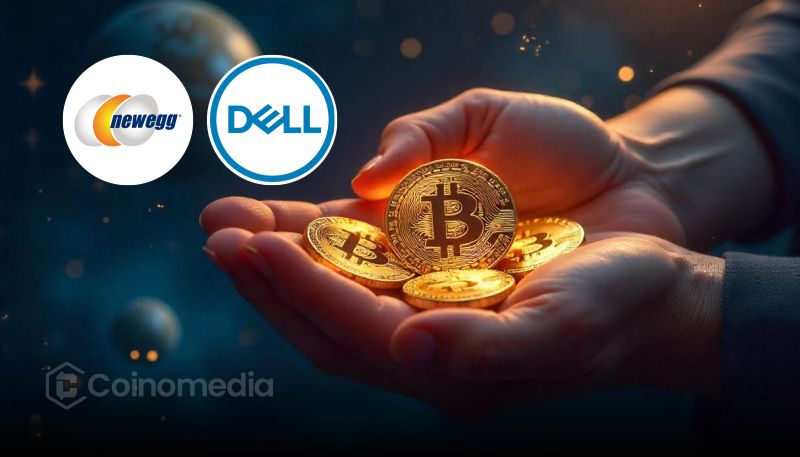Flashback: Dell & Newegg Embraced Bitcoin in 2014
In July 2014, Dell and Newegg began accepting Bitcoin, marking a major milestone in retail crypto adoption.

- Dell and Newegg accepted Bitcoin for payments in July 2014.
- These moves highlighted BTC’s growing role in retail.
- The 2014 moment helped validate Bitcoin’s real-world utility.
A Major Retail Milestone for Bitcoin
In July 2014, two tech giants—Dell and Newegg—made history by starting to accept Bitcoin as payment. At the time, it was a bold move that showcased Bitcoin’s growing legitimacy not just as an investment, but as a usable currency in the real world.
This was more than just a trend. For the first time, everyday consumers could purchase laptops, PC components, and accessories using BTC on trusted, mainstream platforms. It marked a pivotal point in Bitcoin retail adoption and set a precedent for other companies to explore crypto payment options.
Why It Mattered at the Time
In 2014, Bitcoin was still in its early stages of mainstream recognition. By integrating Bitcoin payments, Dell and Newegg legitimized the idea that digital assets could serve a functional purpose beyond speculation.
Key impacts of this move included:
- Boosting Trust: Having well-known retailers onboard boosted consumer confidence in using BTC.
- Mainstream Visibility: Headlines about Bitcoin being accepted by Dell and Newegg brought it into homes across the world.
- Proof of Use Case: BTC proved it could facilitate large transactions, not just micro or niche payments.
While many of today’s crypto developments focus on DeFi, NFTs, or institutional ETFs, this 2014 moment was about utility—proving Bitcoin’s real-world relevance.
Legacy of the 2014 Adoption Wave
Though not all retailers continued accepting BTC long-term due to volatility and evolving tech needs, Dell and Newegg’s decision was symbolic. It paved the way for platforms like Shopify, Microsoft, and even Tesla (briefly) to experiment with crypto payments in the years that followed.
More importantly, it showed the world that Bitcoin wasn’t just an asset—it was a tool. And for many early adopters, this retail breakthrough was proof that the vision of a decentralized financial system was already in motion.
Read Also:
- Kaspa Made Its Move, Now Qubetics Is the Most Popular Cryptocurrency Gaining Ground
- SharpLink Buys 10K ETH From Ethereum Foundation
- Bank of America: Bitcoin Is 2025’s Best Currency
- BTC & ETH Options Expiry Signals Market Uncertainty
- BlackRock Holds Over $5B in Ethereum Reserves



